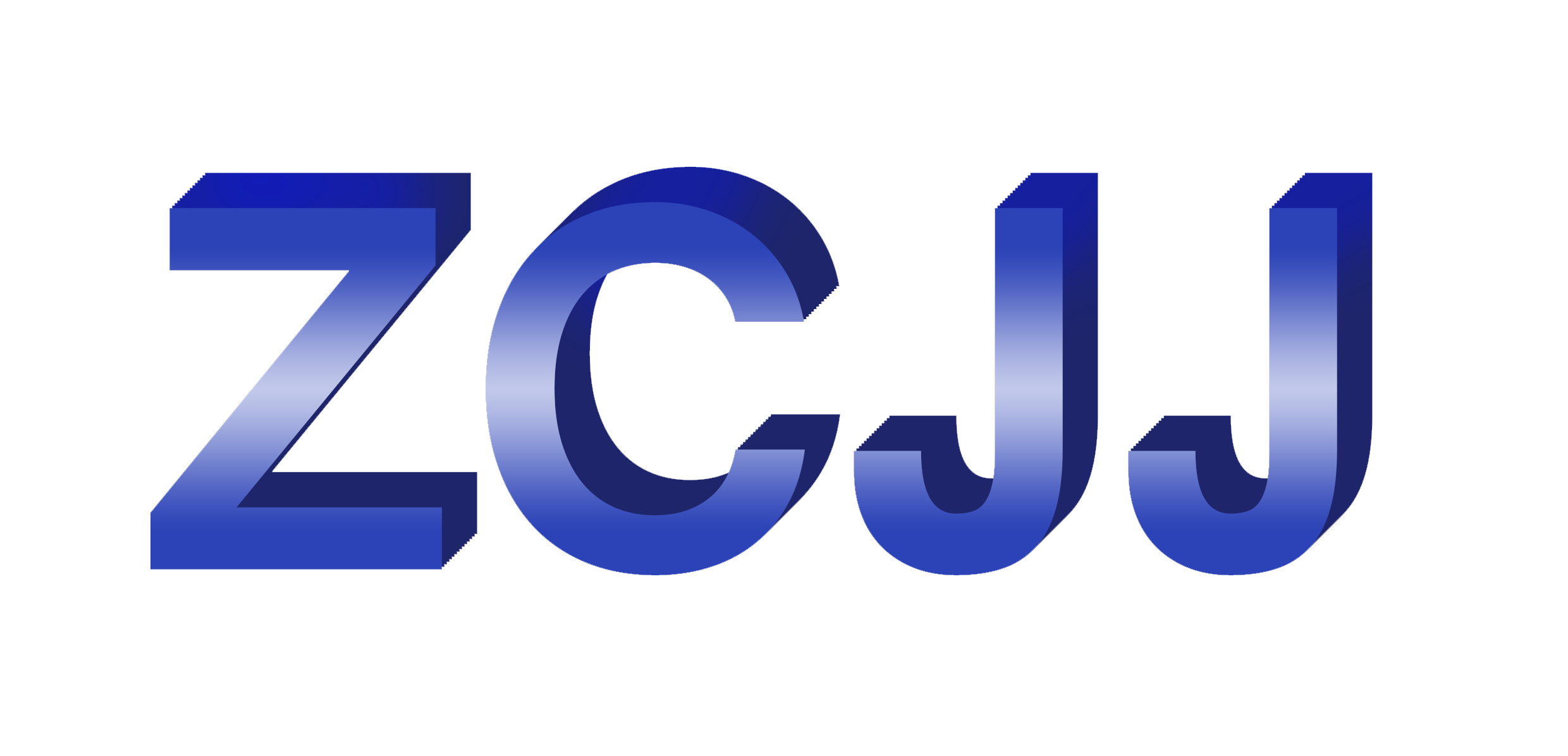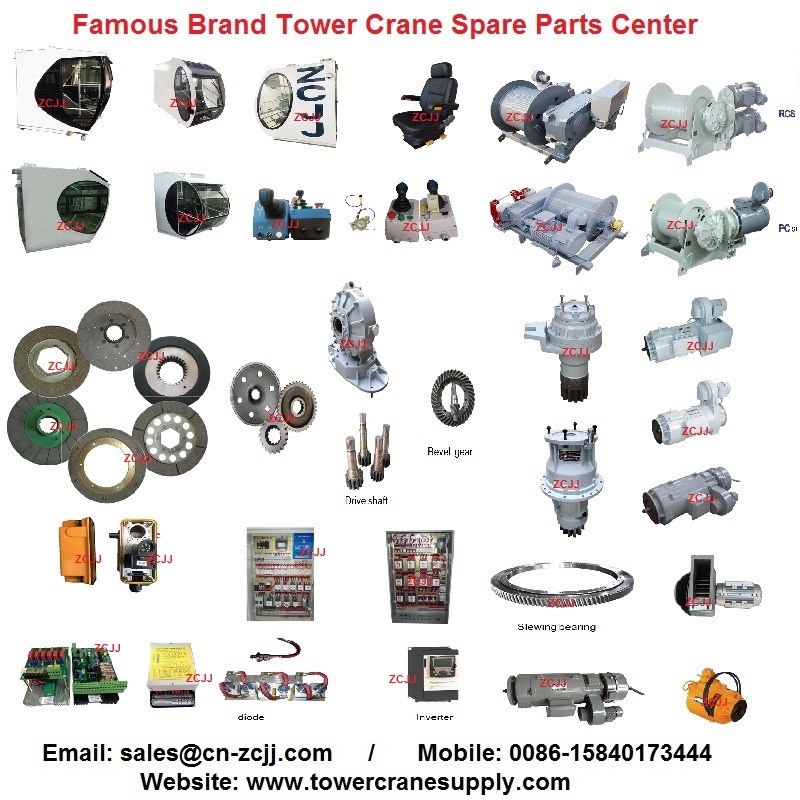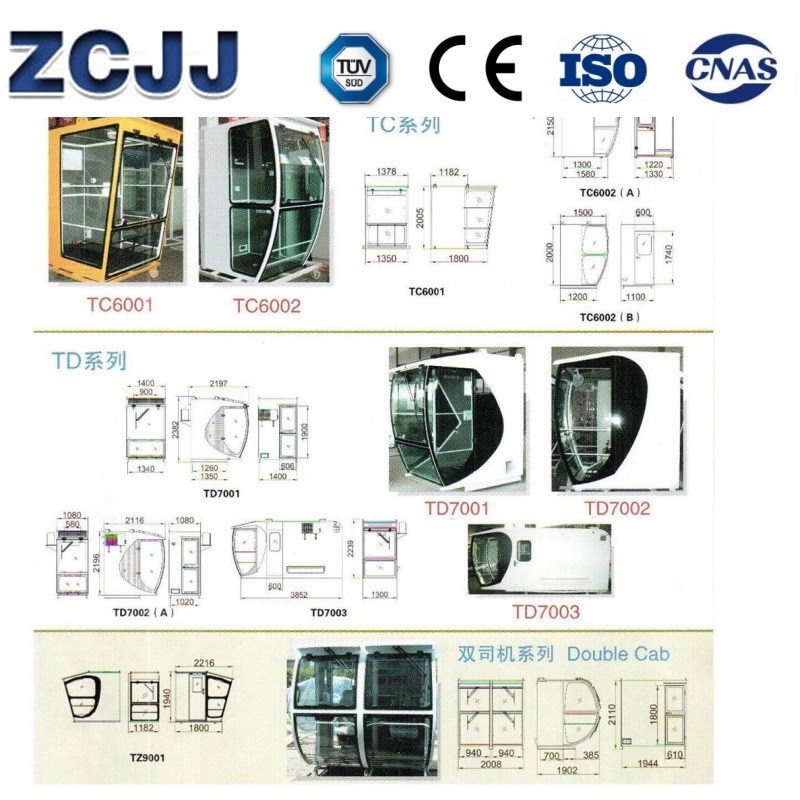Anti Collision And Zone Protection System For Tower Cranes

- ZCJJ
- China
- store
- 10sets
Finland Tower Crane Spare parts, Sweden Tower Crane Spare parts, Norway Tower Crane Spare parts, Iceland Tower Crane Spare parts, Denmark (Denmark) Tower Crane Spare parts
Products Specification
Anti Collision And Zone Protection System For Tower Cranes
Anti Collision
Zone Protection System
Load moment indicator



Anti Collision And Zone Protection System For Tower Cranes
Anti Collision
Zone Protection System
Load moment indicator
Tower Crane Knowledge sharing:
A Simple Method for Differentiating the Quality of Hydraulic Oils without Special Detection Instrument
The quality of hydraulic oil not only affects the performance of construction machinery such as tower lifting, but also causes serious damage to hydraulic system parts.
1 Identification of Water Content in Hydraulic Oils
(1) Visual method: If the oil is milky white turbidity, it indicates that the oil contains a large amount of water.
(2) Combustion: Apply a small amount of oil to a clean, dry cotton yarn or cotton paper and light it with fire. If the "cracking sound" or flash phenomenon is found, it means that the oil contains more water.
2 Identification of impurity content of hydraulic oil
(1) Sensory identification: There are obvious metal particles in the oil, and the presence of small particles is directly felt when squeezed with fingers; Under light, if there is a reflective flash point, it means that the hydraulic element has been seriously worn。
If there is a large amount of metal debris deposited at the bottom of the fuel tank, it indicates that the main oil pump or motor has been seriously worn.
(2) Heating identification: For low-viscosity hydraulic oil can be directly heated in a clean, dry test tube. If precipitation or suspension occurs in the oil liquid in the test tube, it indicates that the oil liquid contains mechanical impurities.
Anti Collision And Zone Protection System For Tower Cranes
Anti Collision
Zone Protection System
Load moment indicator
(3) Filter paper identification: For highly viscous hydraulic oils, they can be diluted with pure gasoline and then filtered with clean filter paper. If there is a large amount of mechanical impurities(metal powder) on the current filter paper, the hydraulic element is seriously worn.
(4) Voice identification: If the entire hydraulic system has a large, intermittent noise and vibration, and the main oil pump emits a "buzzing" sound, even a piston rod crawling phenomenon, then observe the liquid surface of the fuel tank.
A large amount of foam can be found at the outlet of a tubing or transparent level meter. This shows that the hydraulic oil has been immersed in a lot of air.
3 Identification of the change of viscosity of hydraulic oil
(1) Glass plate tilt method: Take a clean glass plate, place it horizontally, drop a drop of the tested hydraulic oil on the glass, and drop a drop of the standard hydraulic oil(the same brand of new hydraulic oil) next to it.
Then tilt the glass plate and pay attention to the observation: If the flow rate and flow distance of the measured oil fluid are larger than that of the Standard Oil fluid, the viscosity is lower than that of the Standard Oil fluid, and conversely, the viscosity is higher than that of the Standard Oil fluid.
(2) The glass bottle inversion method: Put the tested hydraulic fluid and standard fluid in two transparent glass bottles of the same size and length(do not fill up too much), and use the plug to block the two bottles.
Place the two bottles side by side, and then quickly reverse the two bottles at the same time. If the bubbles of the tested hydraulic oil in the bottle rise faster than the bubbles of the Standard Oil fluid in the bottle, the viscosity of the oil fluid is lower than the viscosity of the Standard Oil fluid.
Anti Collision And Zone Protection System For Tower Cranes
Anti Collision
Zone Protection System
Load moment indicator
Conversely, the viscosity of the oil fluid is higher than the viscosity of the Standard Oil fluid.; If the two oil bubbles rise at a similar rate, the viscosity is similar.
4 Identification of variation of hydraulic oil quality
(1) Identification of oil fluid from the oil pump: If a small amount of oil fluid is removed from the oil pump and it is found to be milky white(sometimes like pale yellow milk), and when identified by the combustion method, it is found to contain a large amount of water.
The loss of viscosity by hand indicates that the oil has been completely emulsified and deteriorated and is not suitable for further use.
(2) Identification of the oil in the fuel tank: Remove a little of the tested oil from the fuel tank and filter it with filter paper. If there is a black residue on the filter paper and there is a pungent odor, it indicates that the oil has been oxidized and deteriorated.
It is also possible to remove some of the precipitated sludge directly from the bottom of the fuel tank. If it is found that there is a lot of asphalt and colloidal precipitation, put it on the finger and pinch it. If the colloidal is felt, the adhesion is strong.
Anti Collision And Zone Protection System For Tower Cranes
Anti Collision
Zone Protection System
Load moment indicator
The process of eliminating a hydraulic oil pollution failure was introduced, and measures were drawn up to prevent the failure from happening again. During a fall of the H3/36B building tower crane, the third trip was performed. Suddenly, the hydraulic cylinder is unable to rise, and the piston rod has only a very small extension.
At the same time, the accompanying phenomena are:
(1) Hydraulic system makes a sharp and loud sound
(2) Hydraulic tubes produce intense high-frequency vibrations
(3) A significant increase in temperature can be felt by touching the hydraulic tube by hand.
The hydraulic overhead system of the H3/36B building tower crane is relatively simple. There is only one overhead hydraulic cylinder. The high-pressure oil output from the hydraulic pump is directly input into the hydraulic cylinder, and there is a overflow loop on the main oil road.
After understanding, the hydraulic oil in the fuel tank is a newly replaced hydraulic oil that was newly replaced four months ago when the top lift was added.
After analysis, we believe that the reasons for the failure may include:
(1) Damage leakage of hydraulic pump(2) Internal leakage caused by damage to hydraulic cylinder sealing device.
After stopping the hydraulic pump, the hydraulic cylinder was observed and no piston rod was found to retract, eliminating the possibility of leakage in the hydraulic cylinder. After the oil tank cover was opened for inspection, no damage was found to the hydraulic pump.
However, it was found that the filter core surface of the filter was adsorbed with a layer of fluff and a small amount of fine sand. The hydraulic system returned to normal after the fluff and fine sand were removed.
It is further understood that when the oil was changed last time, the maintenance staff cleaned the fuel tank with cotton yarn to wipe the inner wall of the fuel tank. Therefore, a lot of cotton yarn remains on the inner wall of the fuel tank, causing pollution of the new hydraulic oil.
Anti Collision And Zone Protection System For Tower Cranes
Anti Collision
Zone Protection System
Load moment indicator
When the contaminated hydraulic oil continues to pass through the filter, the fluff is filtered on the filter core, causing serious blockage of the filter core and emptying of the hydraulic pump.
After the analysis of this failure, we made the following requirements for the maintenance of the hydraulic system in the future:
(1) Hydraulic oil should be replaced regularly. Before replacing hydraulic oil, clean the fuel tank first. Do not wipe the inner wall of the tank with cotton yarn, cotton cloth and other items that are prone to falling fibers. Use silk cloth or vinyl resin sponge
(2) Timely cleaning or replacement of filters
(3) During maintenance, no hydraulic element shall be removed and placed directly on the ground.














